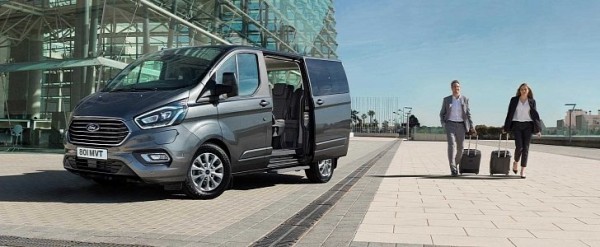
The charging port of the eight-seater van with zero-emission capability is located right below the driver-side headlamp. More or less integrated into the front bumper, the charging port juices up the 13.6-kWh battery which feeds an electric motor/generator that drives the front wheels. The internal combustion engine also drives the front wheels, and Ford doesn’t plan an all-wheel-drive option for the time being.
The 1.0-liter EcoBoost acts as a range extender according to the Blue Oval, “working alongside regenerative braking” to recharge the battery. “Whether delivering executive shuttle services or ferrying large families, the Tourneo Custom Plug-In Hybrid will offer comfort and refinement while also contributing to improved local air quality in busy urban environments,” commented Hans Schep, general manager of Commercial Vehicles in Europe.
Sales of the Tourneo Custom are up 28 percent, and the arrival of the Plug-In Hybrid would take sales to the next level as more and more customers veer away from diesel-fueled commercial vehicles. The plug-in hybrid system has four operating modes, as follows:
* EV Auto – provides the optimum mix of performance and efficiency, deciding when to activate the range extender with the help of control algorithms that monitor the battery and driving conditions;
* EV Now – prioritizes the use of electricity, deactivating the range extender until the battery charge reaches the minimum level of charge;
* EV Later – focuses on the range extender while utilizing regenerative braking to maintain the battery charge at the current level for ulterior use;
* EV Charge – prioritizes the range extender in order to charge the battery as fast as possible.
Charging from a 240-volt domestic supply takes 5.5 hours from empty to full. Level up from 10 to 16 or 32 amps, and charging time drops to three hours or thereabouts.








